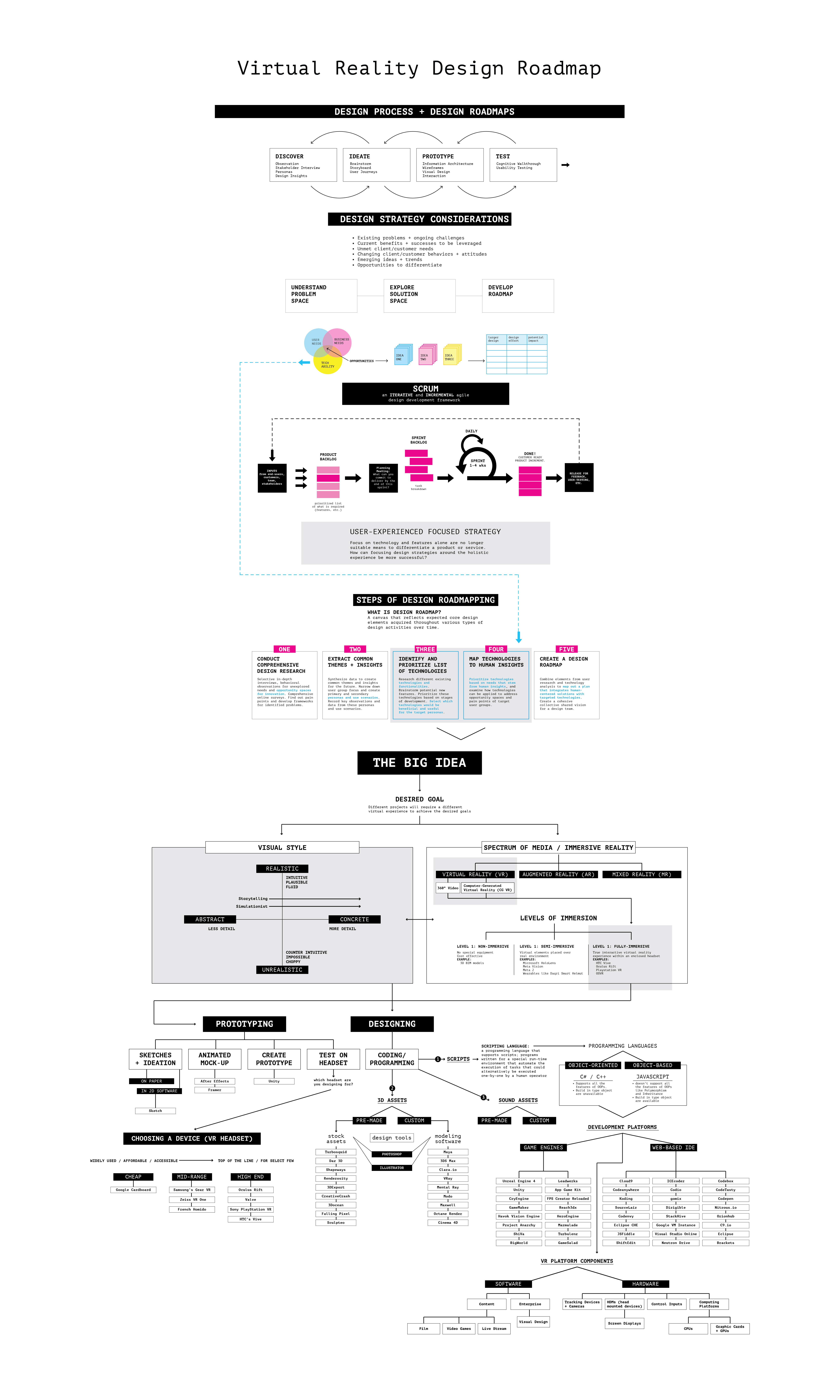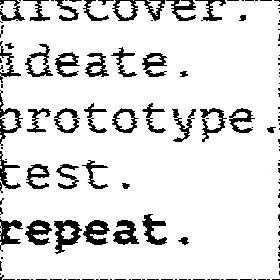As virtual reality moves mainstream, graphic designers are adding the creation of 3D immersive environments to their toolkits. With the embracing of this new technology, how can designers ask the right questions throughout the design process? When and why should we choose to design in VR? And how do we get started? In an industry that changes on a daily basis, would a high level planning tool provide direction to designers?
For this project, I explored how design processes, strategies, and frameworks enable designers to navigate through a project. Many of these principles are universal for design. This particular design roadmap takes into consideration the new world of virtual reality. When having no idea where to start, a tool like this map will enable designers a basic overview of designing an immersive environment.
Most design projects start with a BIG IDEA. Understanding that different projects require different experiences, designers can question the affordances of immersive reality. In addition to levels of immersion, visual style plays a large role in creating an experience. Is the goal to emulate the real world with precision? Or do we want to create a whole new experience that cannot exist in the physical world?
As high-end virtual reality software, hardware, and development can add up, using inexpensive prototyping methods is essential. The classic method of 2D sketching is a great place to start. Animated mock-ups can be created in programs, like After Effects. Higher level prototypes can be created in game engines, like Unity.
While prototyping, it is essential that all team members have the opportunity to experience the virtual environment on the intended device and/or headset. Google cardboard is an affordable and accessible tool for virtual reality prototyping.
Designers have options to custom make all assets (3D, sound, graphics, etc). There are significant resources for downloading pre-made assets as well. When it is time to get into the coding of a virtual experience, designers must choose a scripting language and a development platform. This semester, I had the opportunity to explore C++ and javascript as well as the game engine Unity. Although the leaders in the industry are constantly changing, having a categorized roadmap gives designers the key terms needed to seek out resources.
Overall, roadmaps enable designers to begin working within new technologies. By helping define a framework to move through, opportunities arise in terms of resources and methods for creating immersive experiences.

